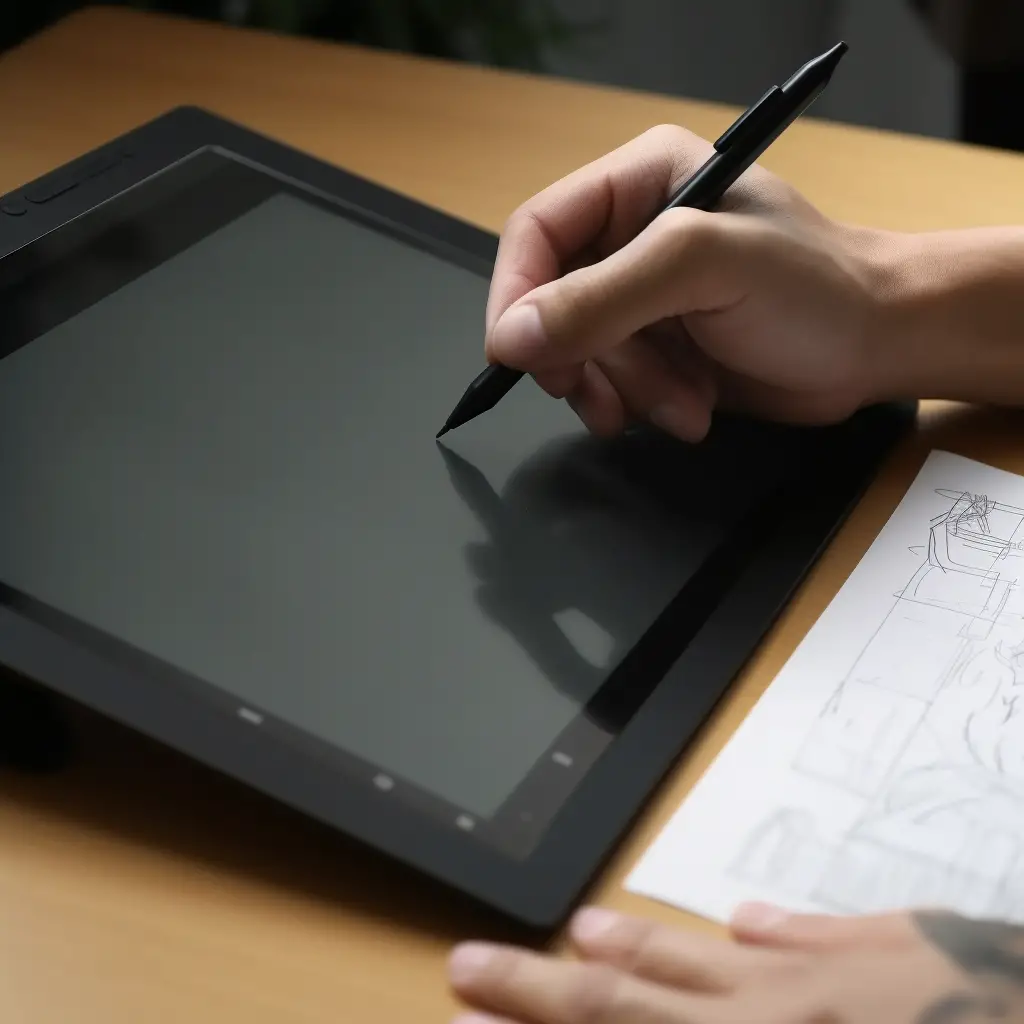
The visuospatial sketchpad is the part of our working memory that handles visual and spatial information. The sketchpad kind of works like RAM in computers, storing information temporarily for our minds to change and store the information in our heads. Imagine giving directions or knowing how to turn a Rubik’s cube, all inside your head.
Additionally, it lets us recreate images we’ve seen in the past (from memory) or in real-time.
Imagine you are drawing a picture of your ex-girlfriend. Initially, you start from a happy picture of when you were both together. But as the drawing progresses, you keep having to look back at the picture to remember what she looks like. Unfortunately, the utter pain of existence without her also keeps creeping in, and you are unable to finish the picture. But the act of remembering what she looks like is an example of the visuospatial sketchpad. Yay!
The Magic Behind the Visuospatial Sketchpad
Think of the visuospatial sketchpad as a magical Etch A Sketch inside the brain, constantly sketching and erasing images to help process visual and spatial information. It’s like a mental artist that’s always on call, ready to illustrate everything that the eyes see or the mind recalls.
The visuospatial sketchpad has two trusty sidekicks: the visual cache and the inner scribe. The visual cache is responsible for storing information about the form and color of objects, while the inner scribe deals with spatial and movement information. Together, they make a great team to ensure the brain has all the visual and spatial data it needs.
Why the Visuospatial Sketchpad Matters
The visuospatial sketchpad is crucial for various daily tasks. Without it, navigating the world would be like trying to solve a jigsaw puzzle blindfolded. It’s essential for understanding maps, organizing objects in a room, and even catching a ball. Moreover, the visuospatial sketchpad plays a significant role in learning and problem-solving, making it a star player in the game of life.
Visuospatial Sketchpad and Friends: Phonological Loop and Central Executive
The visuospatial sketchpad is just one member of the working memory’s A-Team. It’s joined by the phonological loop, which handles auditory information and the central executive, which acts as the boss overseeing the whole operation. They work together like a well-oiled machine, making sure that all the temporary information is processed and managed effectively.
The Power of Visual Thinking
Visual thinking is when the brain uses the visuospatial sketchpad to process information in the form of images. It’s like having an inner artist creating mental pictures to help solve problems and learn new things. Visual thinking can be a powerful tool in various fields such as mathematics, science, and even creative writing.
Examples to Illustrate the Visuospatial Sketchpad in Action
Mental Navigation:
Imagine planning a route to the grocery store without looking at a map or using a GPS. The brain relies on the visuospatial sketchpad to remember the streets, turns, and landmarks to create a mental map. It’s like having a personal, built-in GPS system.
Solving a Puzzle:
Picture trying to put together a puzzle of a beautiful, tropical beach scene. The visuospatial sketchpad comes to the rescue, helping to mentally rotate and manipulate the puzzle pieces to find the perfect fit.
Rearranging Furniture:
Envision a room with furniture that needs rearranging. Before moving anything, the visuospatial sketchpad helps create a mental image of how the new layout will look, like a personal interior designer.
Memory Games:
Think about playing a game of Memory, where the goal is to match pairs of cards with the same image. The visuospatial sketchpad works like a mental camera, taking snapshots of the cards’ locations and images to help remember where the matching pairs are.
Learning Geometry:
Recall those days of learning geometry and trying to visualize shapes and angles. The visuospatial sketchpad was the star of the show, creating mental images of those geometric figures to help understand and solve problems.
Wrap Up
The visuospatial sketchpad is an essential component of the working memory, responsible for processing visual and spatial information. It’s like a talented mental artist, constantly sketching and erasing images to make sense of the world. With the help of the visual cache and inner scribe, it plays a critical role in many everyday tasks, problem-solving, and learning. So, next time you find yourself navigating a new place or solving a puzzle, remember to thank your amazing visuospatial sketchpad.




